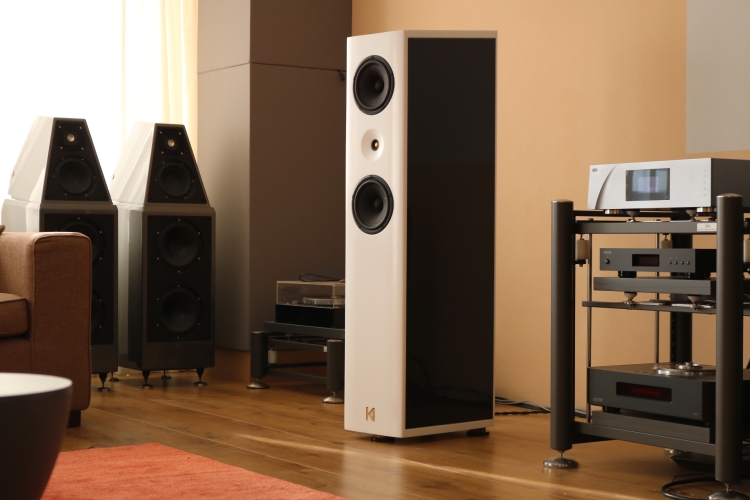
No Way Back!
Review samples supplied by Chattelin Audio Systems
Retail price in the Netherlands: 57.950 euro
Company
When planning my trip to the EnoSound show in Bilbao early in 2018, Cayetano Castellano, Manager of Artesania and international representative as well as the organizer of the EnoSound shows, revealed to me that he became co-owner and export manager for a new brand of high-end Spanish loudspeakers by the name of Kroma Audio. He said that they were really something special and that they would be one of the highlights of the upcoming EnoSound show.
The creators of the Kroma Audio products are Miguel Castro and Javier Millán. Miguel is the designer of the cabinets and Javier designs the crossovers and the fine-tuning is done together during long listening sessions because they believe that our ears are still the best adjustment tools. I have met these gentlemen several times and they are always very friendly and also extremely modest.
Indeed when I first heard these speakers, I noted some qualities that were really outstanding but because the rooms were far from perfect, I could not hear them in their full glory at that time. It wasn’t until after the guys gave an overwhelming demo later that year in Munich as part of the HiFi Deluxe show that I could hear that these speakers truly are world-class. Clearly, I wasn’t alone in thinking this as the orders rolled in and before they knew it Kroma Audio had representation in 10 countries!
This collaboration turned out to be advantageous for all involved: Miguel developed the new Organic Line for Artesania and Cayetano has enabled new business development for Kroma Audio, allowing them to grow from an accessories manufacturer to an important player on the loudspeaker market.
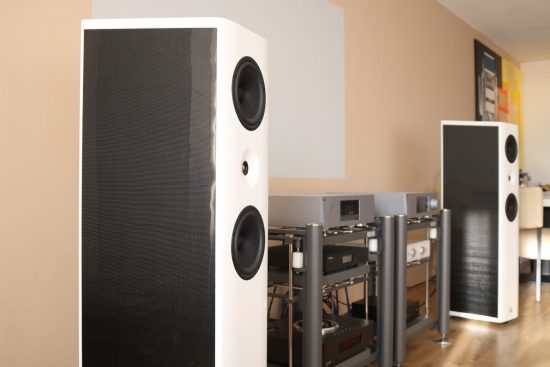
Company Philosophy
Kroma Audio was created out of a desire to combine the highest level of High Fidelity with the naturalness and realism of a live performance. According to Kroma Audio, there are too many loudspeakers with artificial colorations that harm the natural timbres of the instruments and prevent the listener from forgetting that they are listening to a recording. It is their aim to suspend disbelief and to reproduce recorded music with an overwhelming, realistic live-performance-like fidelity.
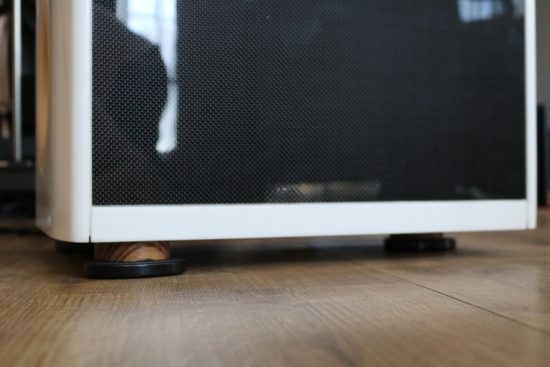
Techniques
The cabinets are fully made from white Krion, with carbon fiber inlays on the sides. Krion is a Spanish variant of Corian, both a sort of “artificial stone” and this material that is responsible for a very large chunk of the speakers’ cost. The Krion website provides the following info: “Krion is a material that is warm to the touch and similar to natural stone. It is made of two-thirds natural minerals (ATH – aluminum trihydrate) and a low percentage of high-resistance resins”.
The speakers are coupled to the ground via included specially manufactured feet made of non-metallic components such as Panzerholz/Tigerwood and Krion. There are as few as possible metal parts inside and even the drivers are mounted using thermoplastic screws.
The passive crossover is comprised of ultra-high-quality components from Duelund, Mundorf and very special NOS components and is isolated in a hermetically separated chamber. The tweeter is made by Hiquphone, a relatively new company headed by the former designer of Scan-Speak drivers. The two Mid-woofers are Scan-Speak Revelator 6,5” made under Kroma Audio specifications. Nominal impedance is 8 ohms and combined with a 91dB sensitivity this makes for a very amplifier-friendly speaker: officially minimum recommended amplifier power is only 15W. The speakers weigh 100kg each and come standard in white Krion with Carbon Fiber but are also optionally available in true 24 Karat Gold Leaf finish.
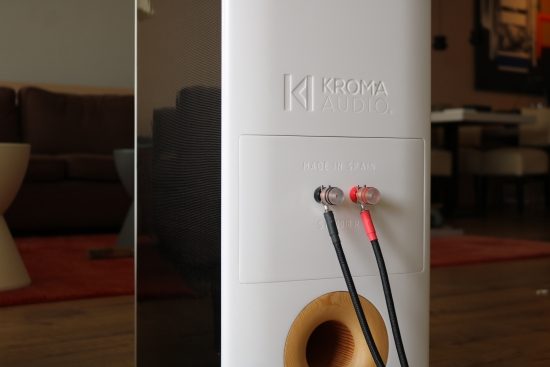
Inside the Krion speaker cabinets, different kinds of wood are used in carefully selected places. Evident from the outside are the two bass-reflex ports, machined from solid wood and of a different sort and thickness for each port: cedarwood for the medium frequencies and spruce wood for the bass frequencies. Finally, there are some small wood pieces in very critical places inside the cabinet to control the energy and to achieve the final part of the fine-tuning with the most natural tonality.
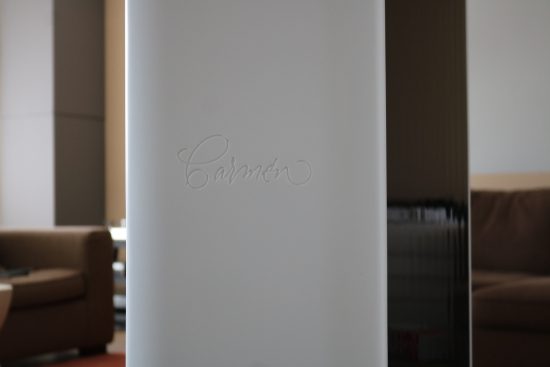
System Context
The setup in which these loudspeakers will be reviewed normally consists of the CH Precision C1 DAC/Streamer/Controller and A1 stereo amp, two music servers: the Melco N1ZH and the Antipodes EX and Wilson Audio Watt/Puppy 8 speakers. For this review, the Wilsons were moved out of sight near the left wall, with their inputs shorted. As a starting point, the Kroma Audio Carmens were set up in the exact same positions as the Wilsons.
Speaker cables are the Jorma no.3 and analog interlinks the Cardas Clear XLR. All power cables are Belden 19364 with Oyaide 004 IECs, except for the ones for the power amps which in this case both used Belden cables with the warmer-sounding Oyaide 079 IECs. I also tried Transparent Super Gen 5 and AudioQuest Water cinch interlinks and the CH Precision Balanced Link XLR cables and while all had their specific benefits I found the balance best with the Cardas Clear XLR. See the Zanden review for a detailed report of the relative differences between these cables.
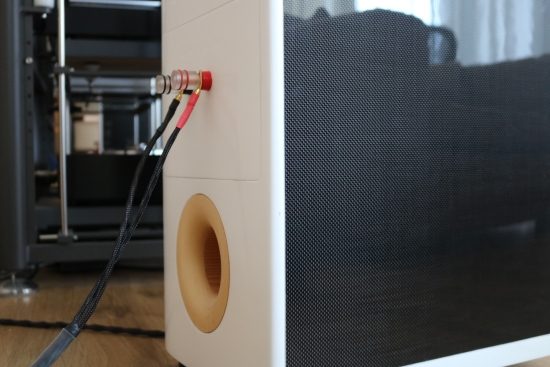
Preparations
Ben van Leliveld and Peter Chattelin delivered the speakers together with a Zanden 3100 preamp and Zanden 8120 power amp and they helped unpack and set up. This was no superfluous luxury, as these speakers are very heavy. They come in very sturdy and luxurious flight cases with embedded wheels so they can be transported by a single person with ease but the unpacking should really not be undertaken without help. Maybe two people could have done the job but I was glad that both Peter and Ben were here to help. When the case was upright with its lid removed, one person held the case while two others wiggled the speaker out of its enclosure. Once the speakers are set up, they move about very easily on my laminate floor and moving them around on carpeting should also be easy, as long as their feet are added only after the speakers are in their final positions.
When all was connected up, Ben made only very minor adjustments to the speakers’ positions and pretty soon we were good to go. To start off, first, we listened to the Carmens using the CH Precision A1 amplifier. The Carmens are very easy to drive and sound much more controlled than the Wilsons and so I found that the A1 could be used best with its feedback adjustment control at its lowest setting, meaning zero global feedback and only local feedback. For the most articulate and precise bass I found that a setting of 20% was ideal but on balance, for the most pleasing overall presentation with a good balance between precision and organic flow, I preferred the zero percent setting.
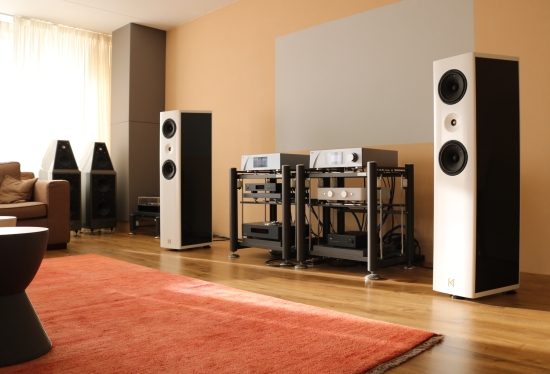
Listening – CH Precision A1
These speakers have superb bass. They are exceptionally linear and even-handed, much more so than my Wilson WP8’s. By comparison, the latter are a little bumpy, in spite of exhaustive room treatment. Maybe, in a perfect room and with enough distance to the listening position, the Wilsons can have a perfectly flat output but not in my room. The Kroma’s, however, simply perform sublimely in the same positions as the Wilsons. They reach as low as the Wilsons do, but because they are so accurate, they may not give this impression until you play a track with truly deep bass. These speakers do not add any heft to create a feeling of fullness, they simply reproduce what is on the recording. All the bass notes come out with perfect articulation and equal pressure. Regular readers may have noted how I tend to emphasize the importance of bass quality. I am admittedly a “Grundton-Mensch”, in other words, I have a preference for the fundamentals of music, more so than for the overtones, although I really couldn’t choose between the two as both are important. It is the bass, however, that forms the foundation of the music. You can have superb communicative powers in the midrange but if the bass can’t keep up, the combined sound will still be slow and non-realistic. It is the bass where the rhythm originates. For me, bass needs to be articulate, fast, dynamic and reach deep, too. Alas, all too often, depth is achieved at the expense of many other aspects, or vice versa. I don’t know how they do it, but the Kroma Carmen simply does it all.
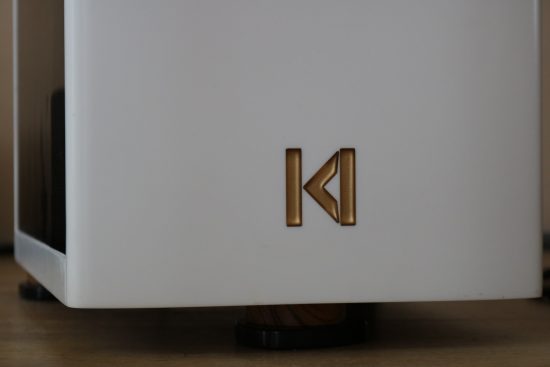
These speakers are also very dynamic and precise. Their precision is especially evident in the midrange but that area does not stand on its own. Midrange sounds have their fundamentals in the bass and although I’m sure that the mid/treble driver is something special, it truly is the incredible coherence with which the three drivers operate that makes these speakers’ midrange stand out. Regardless of their high precision, the Carmens never sound clean or cool. Their enclosure may be resonance-free but this does not lead to a thin or cold sound. On the contrary: these speakers sound richly colorful and full of life.
Piano and vocals sound utterly realistic, even more so than with the Wilsons. From the very first notes of any instrument, you instantly suspend your disbelief and succumb to the music. This is an aspect that literally everyone who visited picks up on – from ribbon-die-hards to small-speaker convicts to music lovers who have no ties with high end whatsoever. All it takes is three piano notes to convince.
The treble is also superb, not by standing out in any one aspect but because of the complete absence of any detractors. Like the bass, it is utterly linear. There is no harshness or edge nor any softening or blurring and there is certainly no dampening of dynamics but absolutely also never any edge or peakiness. Off-axis listening turned out to be another strong area, the speakers sounding extremely even, regardless of where you are seated. Even right next to the speakers, the output is still very linear. They are not ribbon-like in that they do not sound super-airy or super-refined but on the other hand they have incredible resolution and refinement, making me realize that the typical ribbon aspects that I used to chase after for so long may be nice to have but don’t have so much to do with accuracy or relaying the musical message.
I mentioned their coherence – I’m not exaggerating when I say that it is as if the speakers’ three drivers work as a single driver. There is absolutely no perceptible crossover between the drivers, no phase issues and no highlighting of any frequency range. They make the Wilsons, one of the most coherent systems that I have heard so far, seem disjointed from driver to driver. The Wilsons have great PRaT and they sound very fast indeed but in my room and at a 3-meter listening distance, they’re just not as linear as the Carmens.
In a direct comparison when switching back to the Wilsons, it became clear that they are not only bumpy and more forward in the upper midrange, their treble is actually tilted up a little. Although this may be welcome for some systems, and I also liked this aspect of the Wilsons after having lived with various Ribbon speakers, this kind of delivery is not really natural. The Kroma’s sound harmonically richer than the Wilsons and have more saturated colors in the lower midrange but they are extremely linear and they definitely do not have Wilson-like spotlighting. The Wilsons sound more direct but are also more uneven and hard and even edgy at times. Their treble units tend to emphasize leading edges which can sometimes work out well, enhancing the perceived level of detail or openness, but other times this can be overbearing. I would say that the Wilsons have more of a technical approach and the Kroma Carmens are more of a music lover’s product. They make it easy to relax and enjoy the music.
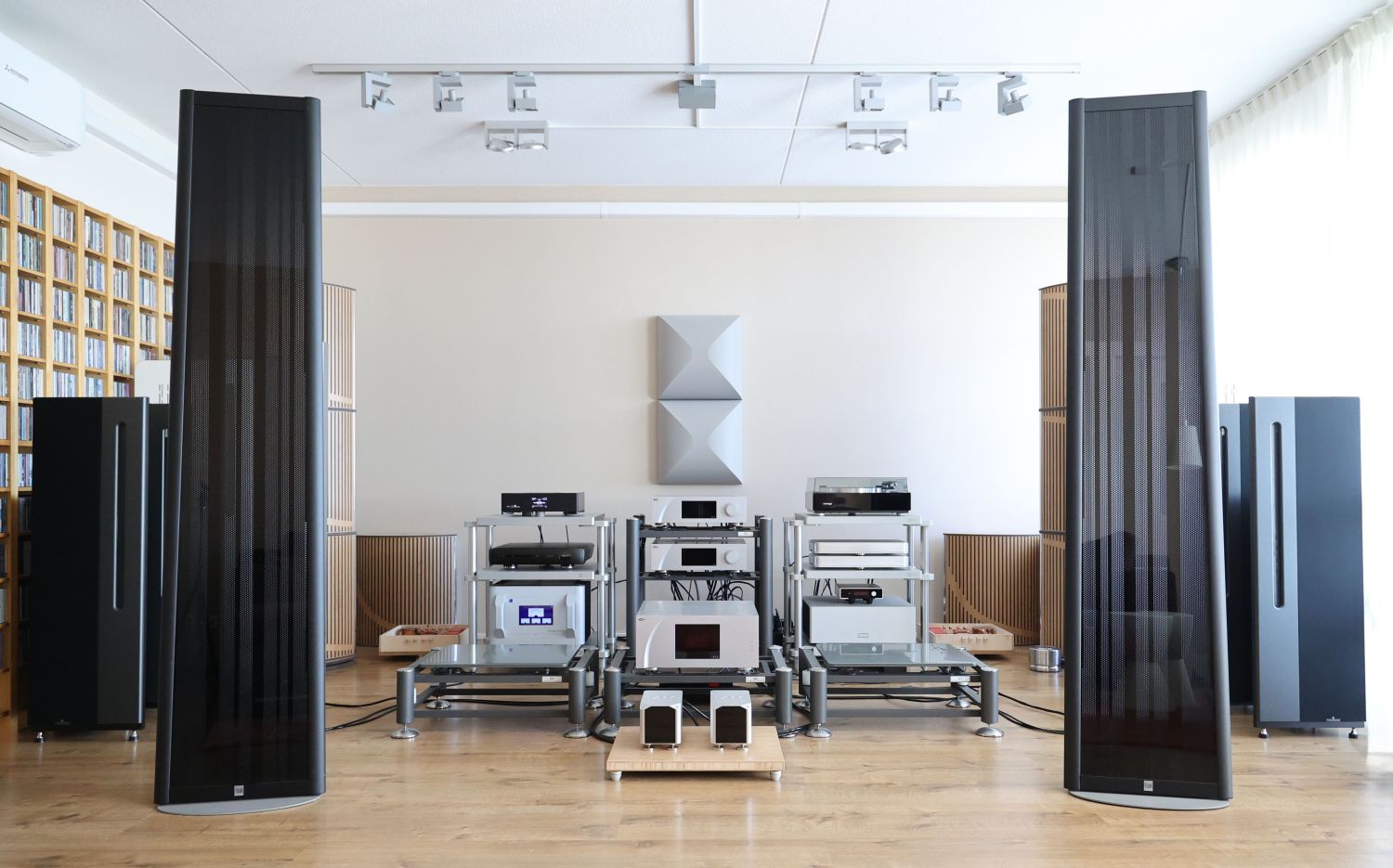
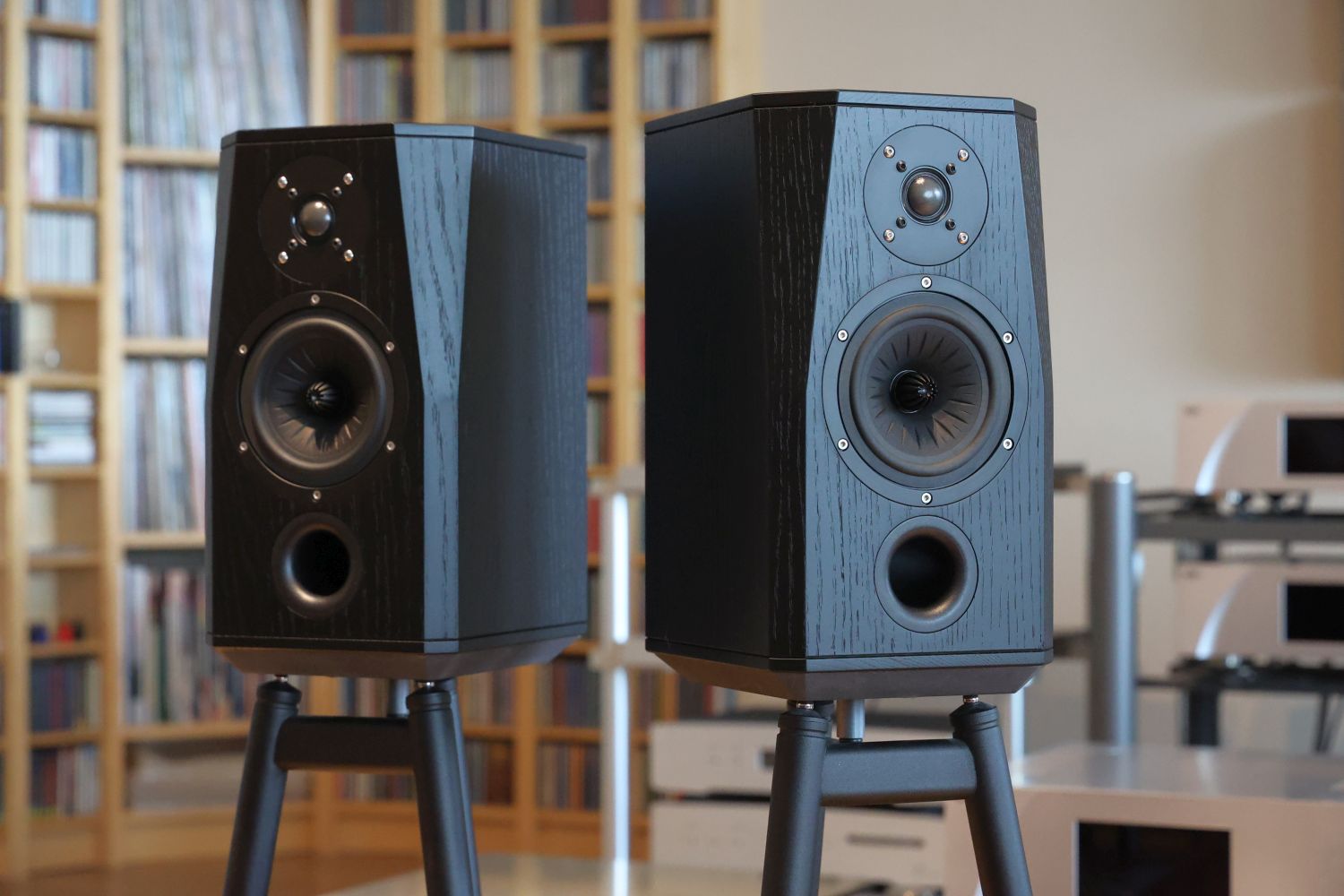
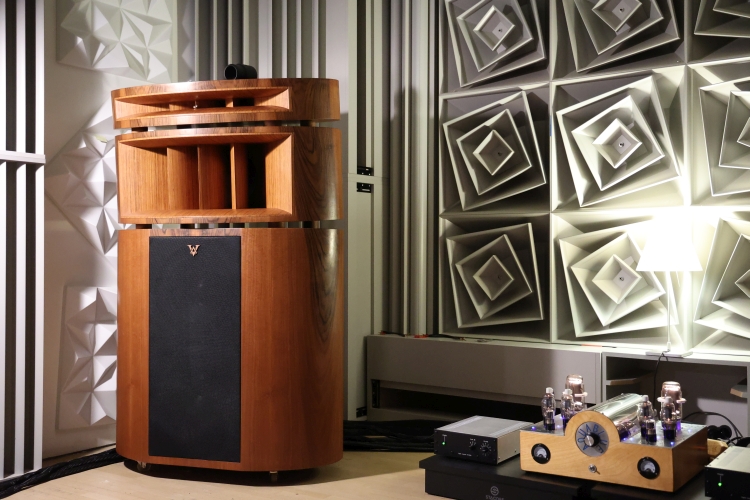
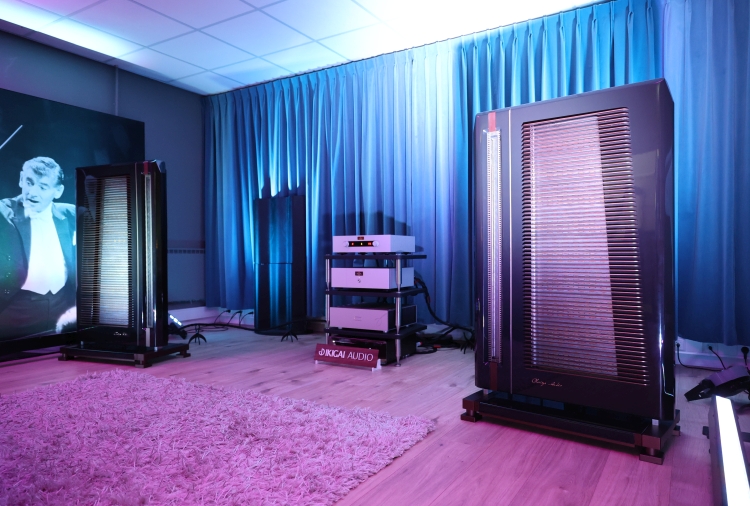
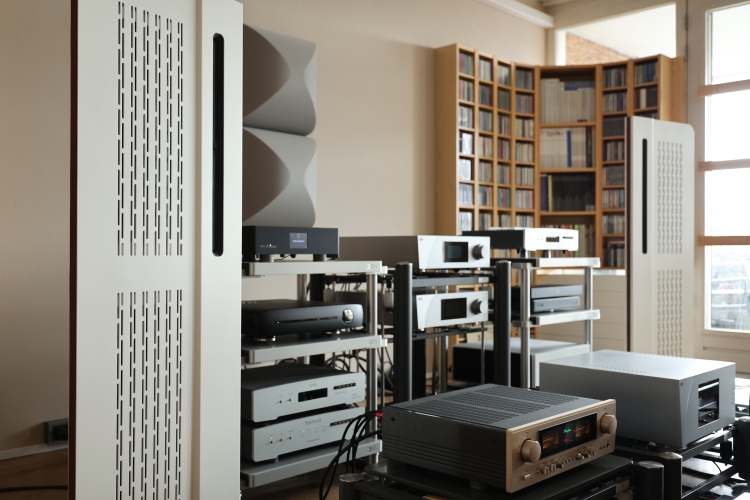
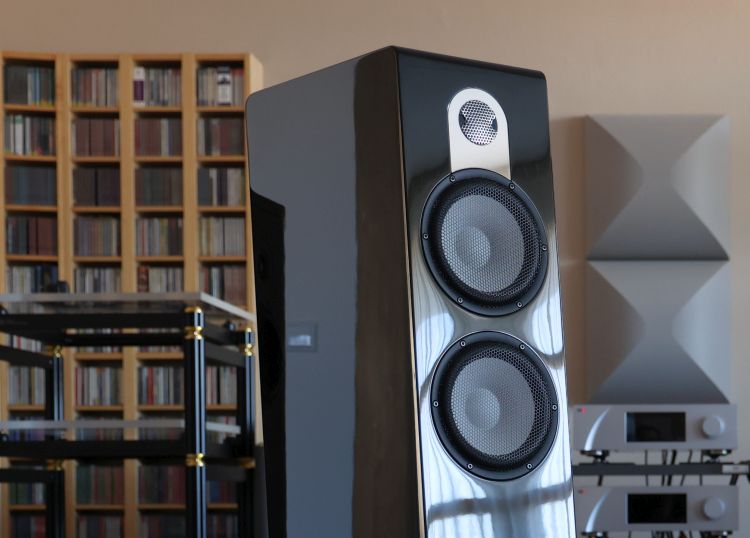
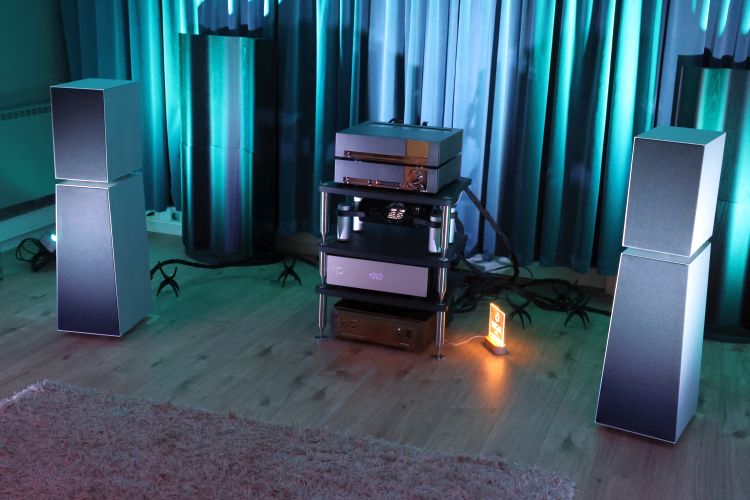
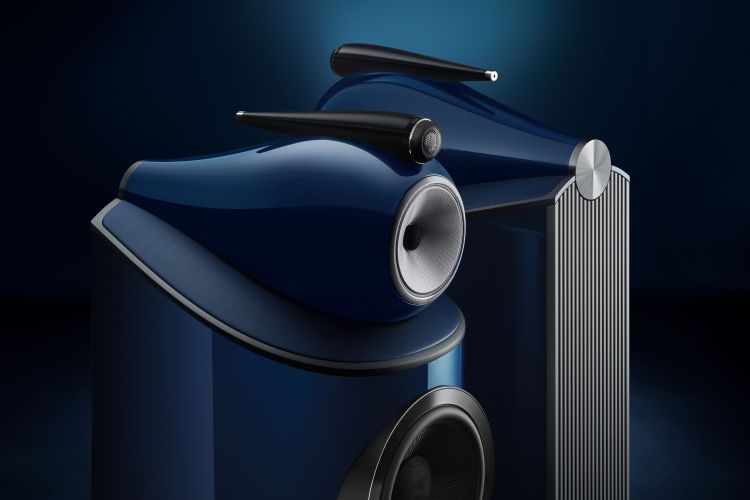
Christian: An interesting, if rather confusing, ‘review’.
At first the White speakers are life-like, dynamic, etc., and then after a few weeks (compared to the Wilson’s), the speakers sound “darker” ?
If I read correctly, the reviewed loudspeakers are near L$60,000 BPD ($75K USD/$100K CAD) ?
And they happen to be life-like/amazing -but ‘dark’ sounding in comparison to Wilson’s used for comparison. What is the price of the Wilson’s ?
Are the White speakers 2-way, 3-way; driver compliment, cross-over topology and X-over points?
What exactly is the material the enclosure is constructed ?
Rest assured, at the price-point stated (if read correctly), a loudspeaker MUST be (should be expected to be) the BEST -no excuses, nor comparatively “dark” sounding.
If a $14L/pair loudspeaker can manage superb, accurate, beguiling SQ (KEF Reference 3); sounding fast, alive, dynamic, nuanced -in a word amazing, anything beyond that rice point must at least be it’s equal -to justify the (enormous, additional) outlay.
That neither you nor the company forked-over boat-loads of product/company details, I say good-luck to the designer’s wishing to compete with the likes of Focal, B&W, Magico, YG Acoustics, and similar all with a well documented history -and very informative product details.
Both you (as a reviewer0 and the White speaker company (manufacturer) can do better. In fact, much better. It’s both expected, and warranted.
peter jasz
Hi Peter Jasz, I see your point and I will go over the review to see if I can clear up some things. For now, I should add that the Kroma Audio Carmens have turned out to need much more running in to become stable. My samples were supposed to already have been fully on-song but as I learned now (5 months later), more time was needed. This explains why they could sound overly warm or shut-in some days and nicely open and communicative on other days. Judged now that they have stabilized (which happened after around 3 months), and having compared them to many more other speakers, I can confirm that the Wilson WP8 are more forward in the upper midrange and their treble is actually tilted up a little, rather than the Kroma’s being dark. The Kroma’s do sound harmonically richer than the Wilsons and tend to be less revealing of the source. The Wilsons sound more direct but are also more uneven and hard and even edgy at times. Their treble units tend to emphasize leading edges which can sometimes work out well, enhancing the perceived level of detail or openness but other times this can be overbearing. I would say that the Wilsons have more of a technical approach and the Kroma Carmens are more of a music lover’s product. Their HF driver never misbehaves yet they have similar resolution as the Wilsons, maybe even better. They make it easy to relax and enjoy the music.
As for the specs I can only quote what the manufacturer supplied which is that the material is Krion and that the speaker is a two-way design. I tried to obtain more info but the language barrier made this impossibe. The designer only speaks Spanish. Anyway, Krion is a Spanish variant of Corian, both a sort of “artificial stone” and it is the cost of the manufacture and assembly of this material that makes the speakers cost so much. There is a site especially for the Krion material: Krion.com. Here, the following can be read: “Krion is a material that is warm to the touch and similar to natural stone. It is made of two-thirds natural minerals (ATH – aluminium trihydrate) and a low percentage of high-resistance resins”. Lastly, I can add that the Kroma Carmen has been measured by the Dutch distributor and is said to have a very flat frequency curve to beyond 20kHz but that, as always, the perception can deviate from what the measurements suggest.
The Wilson WP8 was around 35.000 euro in 2008 and the current incarnation of this model, the Sascha DAW, is 50.000 euro, so they are pretty much in the same ballpark. Should one expect a “PERFECT” product at this price level? Sure! But if you ask me, the perfect speaker does not exist, not even at even higher price levels. Every speaker’s performance is, to some extent, a compromise, a result of decisions made by the designers. More importantly, the interactions with the room in which they are placed play a very large role in their success, and even if they happen to integrate perfectly, personal preferences will still dictate what’s “best”. In the end, all I can do is to relay what I hear in relation to other speakers and with hindsight of the experience that I gained so far. It’s up to the reader or prospective buyer to decide which works best for them.
EDIT – the review has now been edited to read more linearly and logically while retaining my conclusions.
I’ll go for the new ferrite full range Audio Nirvana 15inchers, and make their largest cabinets out of spruce ply. Cost Less than 1KUS$!! Betcha it’ll beat the Kroma.. as the AN reviews say. No.. I’m not their agent just ready for another speaker set, already having the AudioN 8inch Neodinium in Oris Horns.. with Kinergetic subs. Mmagic at 2G$!!
Dear Christiaan,
A real interesting review and a am very curious to here the products of this brand. The described natural, lifelike, realistic and engaging sound is my absolute preference.
I have a complete classic Zanden system and looking for a matching speaker. Matching and often combined speakers are Kroma, Kaiser Kawero, Magico, even the newer Wilson like the mentioned Sasha DAW.
Do you have direct comparisons with these speakers to Kroma? Maybe a newer Wilson Sasha DAW would have ended in another result in direct comparison.
Any informations on this?
Thanks a lot and best regards,
Balazs
Hi Balazs, Classic Zanden can be quite smooth-sounding unless they are mated with very open and efficient speakers. Although all Zanden amplifiers will power Kromas very easily, combining smoothness with a rich and colorful sounding speaker can lead to a sound that is too creamy for some tastes. However, obviously, that’s a personal matter. If it’s the flow and breathing in the music that matters most then you can’t beat tubes and indeed not Zanden. For me, however, the Kromas sounded best when combined with fast and open sounding amplifiers such as CH Precision and the Audio Research Ref75SE.
The Wilson WP8 that I had when I got the Kromas have been described in the review and I still stand by that. Current Wilsons such as the Sasha DAW sound smoother and no longer have that ultra-crisp, sometimes piercing treble. To some extent, they have become a little bit more mellow and less shouty. On the other hand, they remain Wilsons. First and foremost, they are very dynamic and propulsive, sometimes at the expense of nuance or linearity. Second, they still have a tendency to sound boomy unless you have a very large and ideal room. Most notably, even the DAW doesn’t sound like a Kroma in terms of saturation and organic midrange. In a nutshell, they remain different species. For a report on the DAW, see my Reference Sounds review.
Magicos are even further removed from Kroma, unless you go to the larger models of the M2 range, you can’t really compare them. The Q series, are honest and neutral to the point that many can’t listen to them. They will make it painfully clear when a recording isn’t great. The S series corrected that with a sweeter and less dry balance while retaining much of the neutrality and transparency, but still, they are nothing like Kromas or Wilsons. Kroma = Emotional seduction, Wilson = Thrillride excitement, and Magico is all about neutrality, slightly sweetened with later models and, interestingly, downright rich and full-bodied with the biggest M2 models. But most importantly, I wouldn’t advise to use tubes with Magicos, not even the S1 mkII, it just makes them sound dull.
I hope you tried those tubes with the magico. Neutral and tubes can be sometimes magical
I sure did, but so far, I have not found the ideal match using tubes with the S1s. I should add that the S1’s are relatively sweet and smooth and not cool, like some of the Q series models. With the S1s, so far, I personally prefer the tight bass and articulation over the typical benefits of tube amplification.
That said, I have a friend who drives the very difficult and rather clean Magico Q5’s with Jadis JA200 monos, so it is indeed possible:-)
Dear Christiaan, It has been a long time since I visited your website and found this review of Kroma that I found interesting because you are the second audiophile I know who has strongly recommended them for their melomanic character. As I told you in the past, I am also a user of the rebuilt Duetta Signature and although I still keep and listen to them, I was “caught” by another type of sound presentation to alternate with DeVORE Nines. Obviously by price they are from another league but the similarity of our perceptions in both has caught my attention. I send you an affectionate greeting and I thank you once again for the pleasant readings you have given me.
G.
Awesome read. I agree that since these things were sent to you and not many are familiar, the scientific hat should have been positioned in the writeup. Beyond that, you were spot on. .magico entered speaker building via the medium of ( perfection at whatever it costs). There was zero pedigree and heritage to it’s path. It is a scientific speaker company. Wilson also is a scientific company, but Wilson other than the fact that they both launched on a revolutionary-moment in turning monitors Into fullrange possibilities, somewhat more evolved into a scientific company. And so your analogy is entirely logical, in how you describe their musical palette. I get you. I got you when you said these Spaniards greatest passion was tuning by ear. That’s their signature/imprint on the music. Their speaker has no choice but to sound more organic and wholesome than de other two. I most certainly would not mix tubes with speakers voiced that way. You need to light some solid state grunt, high capacitance design in order to achieve nirvana. Having said all of that…I’ve heard Magico on some high powered tube amps and the magic was real. What I would love to hear is a shootout based on synergy. Because it is synergy that matters in audio.
Hi,
Maybe some of you have heard Kroma with the Zanden tube amps (model 9600 MkII with 845 in push pull) or even with complete Zanden classic system? Unfortunately I have never heared Kroma, and I know the Sasha DAW just with other amps like Gryphon, etc.
I would be very interested to hear Kroma in comparison to Sasha DAW with a Zanden system.
Can you, even if not heard, imagine, how it could match and sound?
Sorry, now I read that we have discussed the Zanden/Kroma/Wilson already 2 years ago further above, sorry to ask again. Your answer, Christiaan, further above, is very informative, thanks a lot again!
No probs, Balazs!
Wow, these speakers review like the Acora Acoustics (granite) SC2 that I heard with various pre-amps and amps. Something about the stone frame, simpler crossover and more basic two way system for coherence makes this Kroma speaker probably worth it. I opted for a Von Schweikert VR9 SE Mk2 from 2018 with upgraded sub amps, wiring and all new ribbon tweeters for a similar price. But I really liked the Acoras which had no sound of their own and no faults to speak of. The Kroma reviews the same. Great! (I especially dislike the large and older Wilson’s because they were overly “overt” or resolving over musicality-drives me from the room after 15 to 20 minutes).